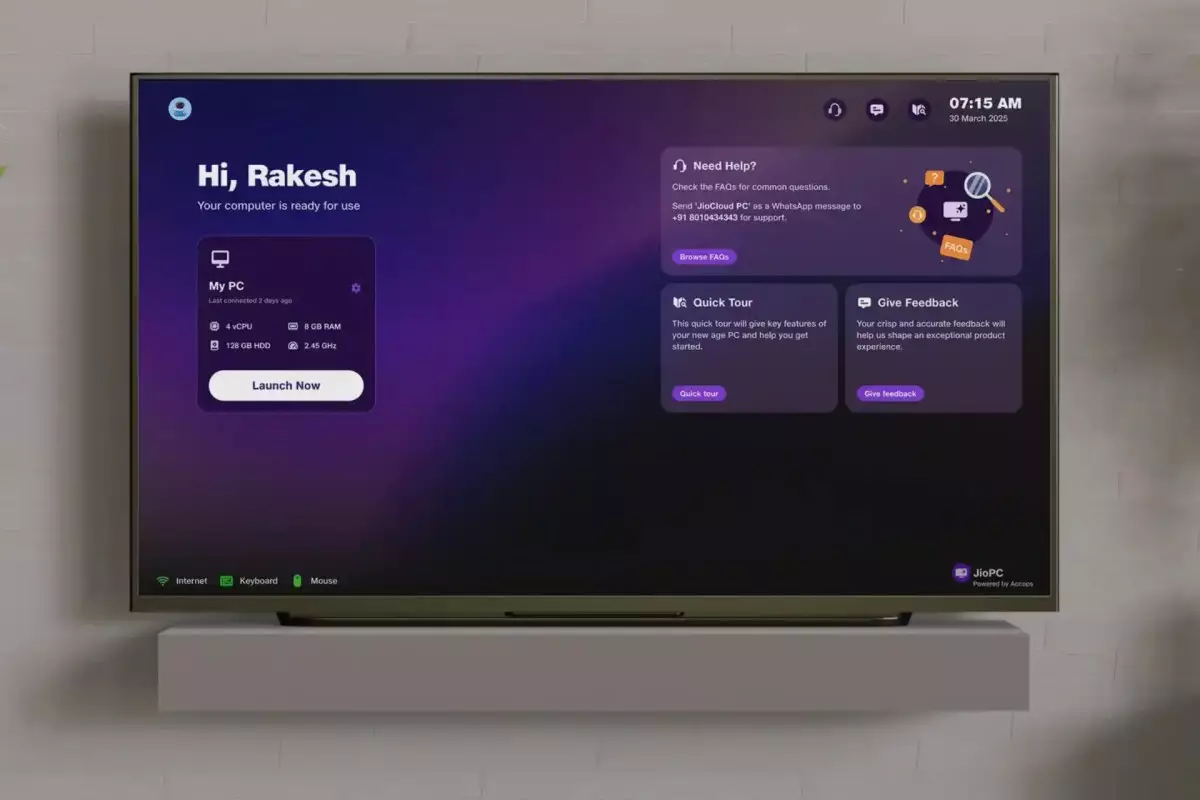In a landscape where digital divides persist despite rapid technological advancements, Jio Platforms, the innovative arm of Reliance Industries, is challenging conventional boundaries by introducing a revolutionary virtual desktop service tailored for Indian consumers. Dubbed JioPC, this service aims to turn every television — a ubiquitous household fixture — into a functional PC experience. This strategic move holds enormous potential not only to bridge the digital gap but also to redefine how millions interact with technology in their daily lives. Mukesh Ambani’s vision positions Jio at the forefront of a technological upheaval that could unlock untapped human potential through accessible, cloud-based computing.
Traditionally, personal computers have been regarded as the primary gateway to productivity, education, and entertainment. However, for many in India, high costs and limited infrastructure have kept PC ownership out of reach. Jio’s approach—leveraging already widespread set-top boxes (STBs) as portals for cloud computing—serves as a pragmatic solution to this disparity. By transforming the television into a virtual desktop, JioPC bypasses the financial burden of purchasing a traditional PC while offering a familiar interface for users. This democratization of computing embraces a simple yet powerful philosophy: technology should adapt to people’s realities, not force them to conform to costly, rigid devices.
What makes JioPC particularly intriguing is its potential to catalyze a paradigm shift in India’s digital literacy landscape. Most Indian households already have access to TVs, with figures suggesting around 70% household penetration. In stark contrast, owning a personal computer remains a luxury for many, with only 15% of households possessing one. By capitalizing on these figures, Jio Platforms could significantly boost digital inclusivity, especially among rural and underserved communities, if the service can scale effectively.
Challenges and Opportunities in Navigating a Complex Market
Despite the promise, JioPC’s journey is fraught with obstacles. The service, currently in a free trial phase and available via a waitlist, faces skepticism around ease of use and perceived value. The necessity of plugging in peripherals, such as keyboards and mice, might intimidate less tech-savvy users. Moreover, the absence of support for external peripherals like cameras and printers limits the service’s versatility, potentially pigeonholing it into a basic, less appealing product for users seeking comprehensive functionality.
Market penetration strategies are also complicated by India’s diverse socio-economic fabric. While rural and low-income segments represent a vast and largely untapped audience, they are also the most challenging to reach. Connectivity issues—particularly inconsistent internet access—pose significant barriers to smooth cloud-based experiences. Limited digital literacy further hampers adoption, requiring Jio to deploy robust educational initiatives and user support programs. These efforts must not only explain how to switch from traditional TV viewing to using a virtual desktop but also demystify the concept of cloud computing itself.
On the corporate front, partnerships with app developers and productivity suite providers are essential if JioPC is to deliver a compelling value proposition. Microsoft Office, the global standard for productivity, is accessible via browser in this ecosystem, yet seamless integration and optimization remain critical for widespread acceptance. To truly succeed, Jio must create an ecosystem that feels intuitive, reliable, and offers tangible benefits over existing mobile and tablet devices.
The Broader Impact: Is Jio Pioneering a New Era of Digital Inclusion?
The strategic intent behind JioPC is bold and perceptive. It recognizes that a significant portion of India’s population is underserved by traditional digital infrastructure, yet is uniquely positioned to benefit from cloud-powered computing. The service could accelerate digital literacy and access, especially among students, entrepreneurs, and informal workers who rely heavily on affordable technology options. Leveraging its vast user base, Jio has the capacity to create a digital ecosystem that is not merely reactive but proactively inclusive.
Furthermore, this move reflects a deep understanding of market trends. The decline of pay-TV subscribers as shifted preferences toward internet-driven content underscores the importance of evolving services. By championing a low-cost, cloud-based desktop experience, Jio is not just following the digital trend—it’s creating a foundation for a future where smart TVs and simple set-top boxes become the primary access points for digital productivity. This strategy could shift the narrative from device-centric to service-centric, where continuous internet access becomes the core metric of digital engagement.
Jio’s initiative also signals a broader philosophical shift in India’s tech landscape: making digital tools accessible, affordable, and familiar. If executed flawlessly, JioPC could challenge the traditional PC industry, combat smartphone dependence by offering an alternative workspace, and catalyze innovative learning and working environments. Whether this bold experiment will sustain its momentum remains to be seen, but what is clear is that Jio’s vision aligns with a future where technology ceases to be an exclusive privilege and instead becomes an integral part of everyday life for all.

